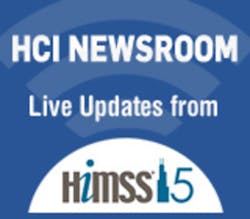Three weeks after issuing the proposal rule for Stage 3 of the meaningful-use program, officials from the federal Centers for Medicare and Medicaid Services (CMS) appearing before an audience of healthcare IT leaders at the HIMSS Conference on Monday, April 13 took pains to cast their approach as a significant departure from the first two stages, and prominently focused on their nudging the healthcare industry toward care transitions, information exchange and patients’ involvement in their care.
“This isn’t about the end being, ‘I have technology’; this is about the use of that technology to do things that are going to improve care, to do things that are going to improve coordination of care, to do things that are going to improve outcomes,” said Elisabeth Meyers, head of the CMS Office of eHealth Standards and Services.
Meyers and other CMS officials said on Monday, the opening day of the Healthcare Information and Management Systems Society convention in Chicago, that the rigid stepwise approach to conceiving and requiring the fulfillment of objectives was being put aside. “If I had my way, we probably would have not called this regulation the ‘Stage 3’ regulation; we would have called this the ‘meaningful use for everyone regulation’, because that is part of what we’re doing here. We are getting away from a stepped process,” said Robert Anthony, deputy director of CMS’ quality measurement and health assessment group.
For example, such a process, Anthony said, focuses health information exchange (HIE) objectives on improving outcomes making sure providers in charge of the same patient are sharing information. “If can see information follow the patient across multiple settings of care, then we’re really getting to something.”
Anthony cited his own father as “the quintessential example” of a target for this exchange. A type 1 diabetic, he has primary-care doctor, two endocrinologists, a cardiologist, an ophthalmologist, and none of his records follows him,” Anthony said. HIE examples often have perpetuated the typical example of having a record available for someone in an ER who lives many states away, but “the challenge is for people like my dad using the specialist that’s five miles across town.”


